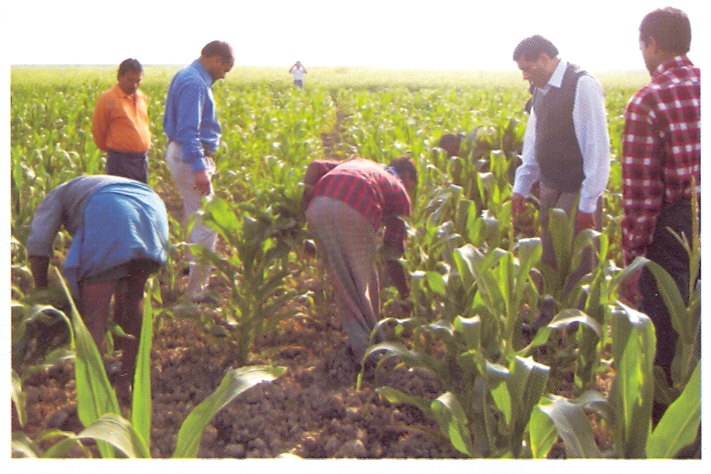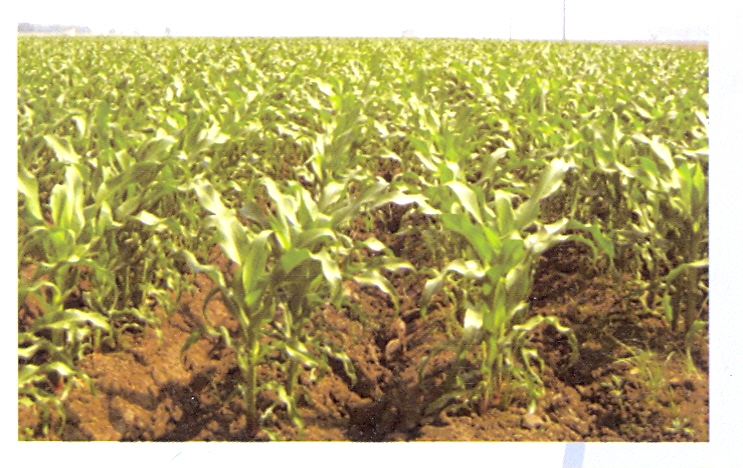If possible, the hybrid seed production should be taken either in the area where no other
maize variety is planted nearby the seed production plot or at least 400-500 metre distance
is required between two maize genotypes to maintain the genetic purity.
| Parents | :Female Male |
| 193-1 163 | |
| Sowing time | :First week of July in Kharif and First week of November in Rabi in northern India |
| Seed rate | :Female Male |
| 15 kg/ ha 10 kg/ha | |
| Method of Sowing | |
| Female: Male ratio | :3:1 |
| Spacing | :Row spacing (East-West
direction):60 cm Plant spacing:20 cm |
| Nutrient Management: | FYM@15 tonnes/ha |
| N - 200 kg | P2O5 - 80 kg | K2O - 80 kg |
Zn So4 25 kg/ Hectare |
Total FYM, full doses of phosphorus, potash and zinc and 10 % N should be applied as basal. The remaining dose of nitrogen should be applied in four splits as per details given below to avoid losses and meet the requirement throughout the crop cycle-
1. 20% N at 4 leaf stage
2. 30% N at 8 leaf stage
3. 30% N at flowering stage
4. 10% N at grain filling
Water management
Irrigation should be given as and when required by the crop depending upon the rains and
moisture holding capacity of the soil. Light and frequent irrigations are desirable Young
seedlings, knee high stage, flowering and grain filling and 10 days after grain filling are
the most sensitive stages for water stress for inbreds and irrigation should ensured at
these stages. Water should not overflow on the ridges. The irrigation should be applied in
furrows upto 2/3rd height of the ridges.
Weeds are the serious problem in maize, particularly in wet (monsoon) season that competes
with maize for nutrient and causes yield loss up to 35 %. Atrazine being a selective
and broad-spectrum herbicide in maize checks the emergence of both broad leaves and most
of the grasses. Pre-emergence application of atrazine @ of 1.0-1.5 kg a.i ha-1 in 600
litre water is effective for controlling weeds. While spraying, the person who is doing
spray should move backward so that the atrazine film on the soil surface may not be
disturbed. Preferably, three nozzle booms may be used for proper ground coverage and
saving time. One to two hoeings are recommended for aeration and uprooting of the remaining
weeds.
Insect Pest Management
Stem borer is a serious problem in maize. It can be controlled by 1-2 spray of Carboryl or
Endosulfan after 10 days and 20 days of germination. Application should be done in the
central whorl of plant.
Ist spray: 500 gm Carboryl or 625 ml Endosulfan (35EC) in 500 liter water.
IInd spray: 750 gm Carboryl or 900 ml Endosulfan (35EC) in 700-800 liter water, if required.

Photo 26. Insecticide application in whorl

